Sundara
back to HIFIMAN
back to measurements
home
published: Jun-23-2018, updated: Jun-8-2020
NO SMOOTHING is applied to the shown plots. Most measurement sites have some smoothing applied which ‘irons flat’ sharp peaks and ‘wiggles’. I do not use smoothing because some info about sound quality is lost when plots are smoothed.
Aside from a small correction of the microphone itself also some correction in the lowest frequencies is applied to the plots to compensate for the perceived loss of bass when using headphones. This is described HERE in more detail.
A ‘horizontal‘ frequency response curve on the shown frequency response plots on this website thus indicates a perceived ‘flat’ tonal signature.
ALL measurements are made with a good SEAL on a flatbed measurement rig.
The shape of your head, bone structure, pad size, pad ‘softness, (compliance), hair or no hair and or wearing glasses may (drastically) change the frequency response of some headphones, so… your personal experience may differ substantially from these plots.
Frequency response (tonal balance) is the most sound-determining aspect of headphones. A horizontal line shows audible neutral response in the plots on this website. Deviations in different severities at different frequency bands have an effect on the sound character.
The bigger the deviation the stronger the effect.
Below an aid to help determining the sound character of headphones with relation to the frequency response.

HIFIMAN Sundara
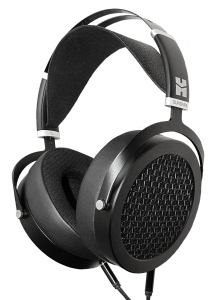
The HIFIMAN Sundara is a planar magnetic over-ear headphone intended to be driven directly from desktop gear and the better portable DAPs as well. You can connect these directly to a phone and it will play nicely, just not very loud.
It retails for around € 500.- which is not really cheap but competitive with other planar magnetic headphones.
It replaces the HE400i, HE400S and HE560 and in pricing is between them.
The Sundara looks good to me, pretty standard headphone looks.
The headband works well and can be adjusted over a decent range in height and width. The pads are comfortable. The outside is pleather but the part that touches the skin is made of fabric.
In fact the whole headphone feels comfortable to me.
The supplied cable is a bit stiff and ‘springy’ but the good news is that it is not microphonic.
It is an open headphone so while it can be connected to portable gear and plays very nice from it there is absolutely no isolation from outside noises. Everyone around you can hear what you are playing and you can hear all ambient noises unattenuated.
specifications:
Type: Over ear, open
Usage: Home usage
Driver type: planar magnetic
Pads: replaceable, slanted hybrid pleather/polyester cloth
Inner pad dimensions: depth: 20mm rear, 25mm front side, Diameter: 55mm
Collapsible: No.
Headphone connector: 3.5mm TRS (marked L and R)
Cable entry: double sided
Cable: replaceable, 1.6m. 3.5mm TRS with 6.3mm adapter
Driver size: 60mm
Nom. power rating: not specified (assumed 1W)
Max. voltage: 6 Vrms (assumed 1W)
Max. current: 160 mA (assumed 1W)
Max. S.P.L. 120 dB (assumed 1W)
Impedance: 37 Ω
Efficiency: 90 dB @ 1mW
Sensitivity: 104 dB @ 1V
Weight: 372 g.
Clamping force: low/medium
Accessories: 1.6m. cable with 3.5mm TRS jack and 6.3mm adapter, booklet.
Sound description:
The Sundara sounds slightly ‘lean’ in the bass area. The bass does sound good, well extended and ‘tight’.
The upper mids have a slight coarseness to it. There is a somewhat ‘artificial’ emphasis/sibilant heard with some recordings. Some ‘sharpish edge’ on on voices and instruments.
A passive in-line filter is available that addresses the 8kHz peak.
Dynamics sound a tad ‘compressed’ as in not ‘super dynamic’ as some other headphones manage.
Note the Sundara has been updated with new pads which is an improvement. The measurements below are of the older, no longer available, version.
measurements:
Below the frequency response of the Sundara (Left, Right)

Channel matching is quite good. Subbass response is excellent and goes down well below 10Hz.
Raw measurements of the area between <10Hz and 1kHz is actually ruler flat.
These plots, however, show the perceived tonal response at average to below average listening levels. This is close to how I hear it as well. Slightly lean and neutral and not missing subbass. Just not a ‘full bodied’ and warm sound signature.
The dip between 1kHz and 5kHz is smaller in reality than it measures because the so-called concha-gain will make this measured dip smaller than it looks. This is because the drivers are angled and thus make use of the concha which ‘boosts’ frequencies under an angle.
A dip in this part of the frequency range is thus more desirable than a peak.
Treble extension is good. It goes well beyond 20kHz. Above 20kHz there still is some life just not at the same level.
Around 9kHz there is a small peak. When you want to get rid of this you can use a passive inline filter.
Seal
Loss of seal with closed headphones usually means a substantial loss of bass. With open headphones this is less of an issue. The pads are shaped to conform to the head so ensure a decent seal in most cases. Below the effect when used with thick arm glasses and with a substantial seal breach versus a perfect seal.

What is interesting is that a seal breach does reduce the subbass extension but around 60Hz the level actually increases slightly. No real need to worry about a perfect seal.
comparisons
As the Ananda and Sundara are the (relatively) lower priced planar offerings of HIFIMAN a comparison of Ananda and Sundara is logical.
(1/24th octave smoothing is applied to show tonal balance differences better).
The Sundara is half the price of the Ananda. In shape and comfort as well as efficiency (how loud it plays from a device at the same volume setting) these headphones differ a lot. The Ananda is slightly ‘smoother’ sounding. The Sundara is more a worthy successor of theHE400i and HE560.
Below a comparison between the HE560 and Sundara.
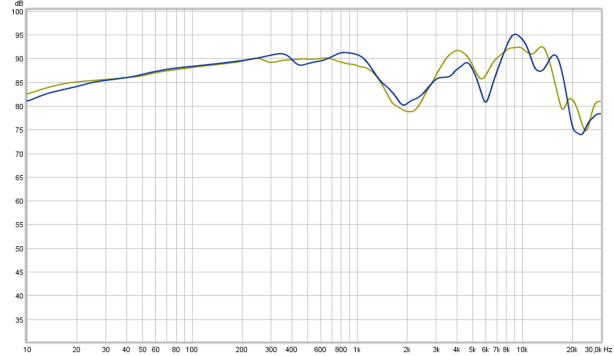
While the HE560 has an emphasis around 4kHz the Sundara performs a little bit ‘better’ here and makes the Sundara somewhat less ‘clear’ sounding. On the other hand the 9kHz peak is higher which makes cymbals stand out slightly more. While the tonal balance is quite similar they do not sound the same. The Sundara, with a slightly angled driver, is a bit more ‘relaxed’ sounding.
The Sundara also replaces the HE400S and HE400i. These were quite different in sound signature and one did have a choice there. The HE400i and Sundara match quite well in tonal balance and can understand why it is said that the HE400i has been replaced with the Sundara. Below the comparison of these 3 headphones.

Below the most interesting comparison of the HIFIMAN planar line. The ($500) Sundara versus the ($ 6000.-) Susvara
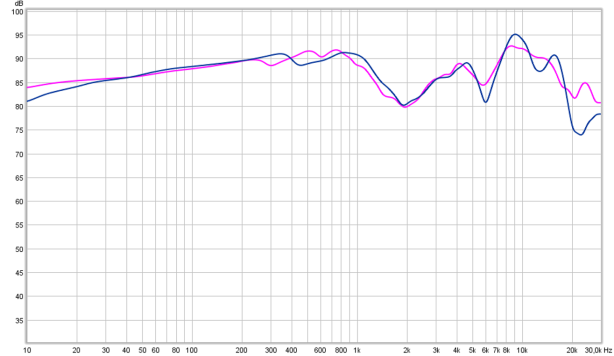
This makes you wonder why one would even consider buying the $ 6000.- Susvara when one can have a Sundara for $ 500.-.
There are differences well over 2 dB at various frequency bands so even though the plots show the overall tonal balance is comparable there certainly are audible differences between these models so do not sound the same.
Upper treble extension of the Susvara is better, subbass extension is better, treble quality is better. Whether the Susvara is $ 5500.- better (not 12x better) is something I won’t burn my fingers on. Price performance ratios drop dramatically for higher priced headphones. One needs to pay a LOT more for small, but for some appreciable, differences.
The Susvara thus is still in a different class/league. You can’t drive the Susvara from portable devices either. In fact the Susvara needs a really good and powerful amplifier.
That said … the Sundara is quite a capable headphone and can be recommended in this price range.
output resistance / damping-factor
As this is a planar magnetic headphone its impedance is as good as ruler flat so a higher output resistance amplifier will have no consequences for the frequency response/tonal balance/damping. Driven with an amplifier with (0.2Ω) and (120Ω) output resistance.
Of course the levels are compensated as through a high output resistance the level will be 12.5dB lower.
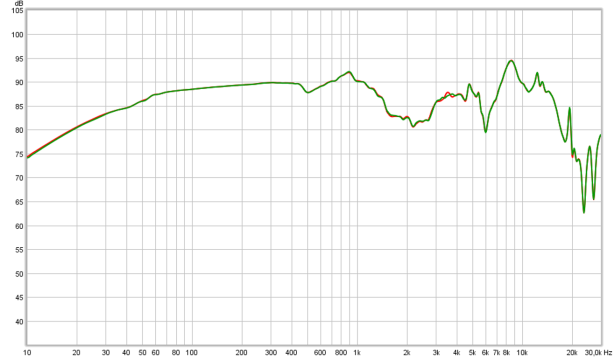
The good news here is that the output impedance of the music source is completely irrelevant. No tonal balance changes.
Below the distortion measurements of the Sundara (Left channel).
Note that this headphone was measured at ![]() where background noises were present in the demo room. As this is an open headphone the distortion levels and spectrum plot performance may thus be better in reality than as shown on the plots due to ambient sounds being measured along with the headphone.
where background noises were present in the demo room. As this is an open headphone the distortion levels and spectrum plot performance may thus be better in reality than as shown on the plots due to ambient sounds being measured along with the headphone.

Below the same distortion plot but displayed in percentages.

The distortion levels are very low. Below 0.5% in the lows is really excellent.
The 2nd harmonic distortion is most likely lower than the 0.2% shown in the plots. This is due to the limit of the measurement rig which is reached.
The peak around 11kHz is a resonance, so is the small peak around 5.5kHz.
Below the CSD of the Sundara. (Left and Right are superimposed)
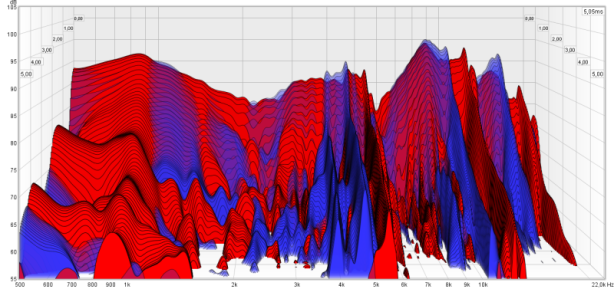
The CSD looks quite ‘messy’ compared to dynamic headphones. Around 5kHz there is quite a resonance visible which are not exactly the same for L and R channel. It looks like this might be caused by the tension of the membrane. This headphone is not fresh from a box and is a demo model so has had quite a few hours on it already.
The left channel likes to vibrate just below 5khz and around 10kHz. The Right channel around 5.5kHz and 11kHz.I don’t think it is an coincidence that these are multiples.
The membranes aren’t damped that well it seems but this is seen more often with large planar membranes.
Below the spectrum plot of the Sundara (Left channel).
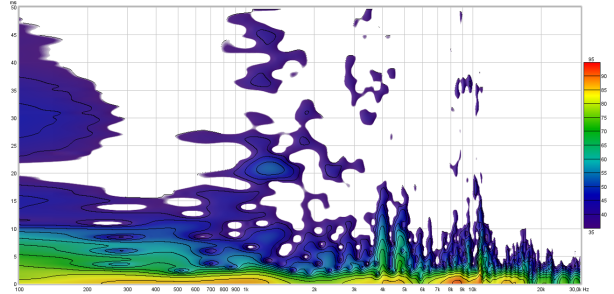
The membrane seems quite well damped for lower frequencies. Lower frequencies do not ‘linger’ on in this headphone. The blue ‘islands’ here and there above 500Hz may well be caused by ambient sounds during the measurements. The ‘ridges’ at 4kHz and 5kHz are really there as are those around 10kHz. This means that the signal doesn’t die out as fast as desired. This behavior is seen with a lot of planar magnetic headphones.
The step response (Lef channel) below shows the sub-bass is just slightly rolled-off.
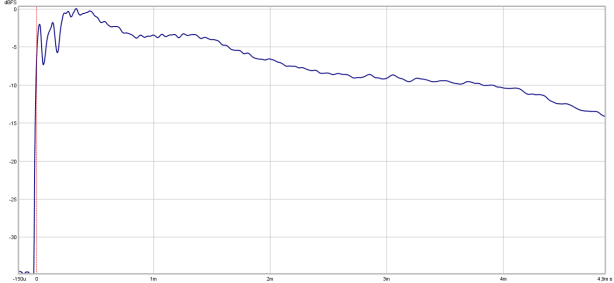 The higher frequency resonances directly after the initial rise are not very short lived. Impulse response is at the proper level and shows excellent qualities with a only a small emphasis in the lower treble. Some low frequency ‘wiggles’ in a low amplitude are seen on the horizontal trace as well as high frequency ‘noise’.
The higher frequency resonances directly after the initial rise are not very short lived. Impulse response is at the proper level and shows excellent qualities with a only a small emphasis in the lower treble. Some low frequency ‘wiggles’ in a low amplitude are seen on the horizontal trace as well as high frequency ‘noise’.
The plot shows a ‘bump’ around 0.4ms which means there is an audible emphasis around 2.5kHz which is not seen on the frequency plots, in fact it even shows a dip there. It does account for the ‘clear’ sound it has.
9kHz filter
To get rid of the treble peak (when it bothers you otherwise you need not bother) you can use the circuit below or buy one ready made.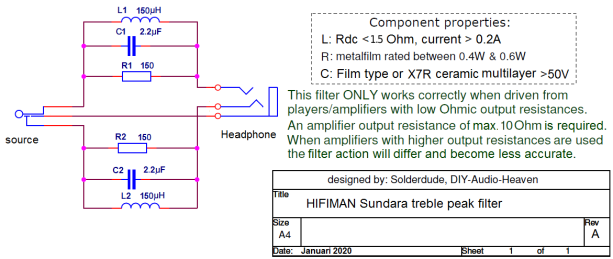
Below the effect the filter has on the (measured) response of the Sundara

summary
Fit and finish, comfort, weight (for a planar headphone) are quite good.
The sound signature is ‘neutral’ as in not ‘warm/full bodied’ and can be a bit bright with some less well recorded pop music or older rock recordings.
Classical and well made recordings sound good on this headphone.
Perfect for home usage from a decent source. Not suited for portable situations where isolation is needed.
For those looking for a clear and detailed sound without boosted lows and want ‘planar’ sound this headphone might be an excellent choice.
When one is bothered by the 9kHz peak a passive filter is an easy fix.
